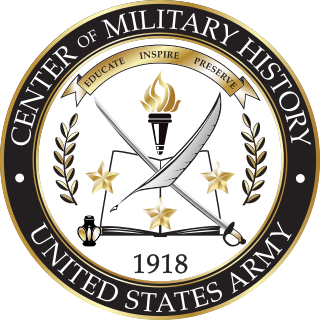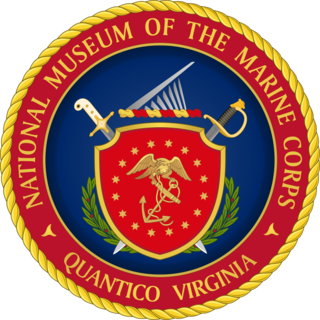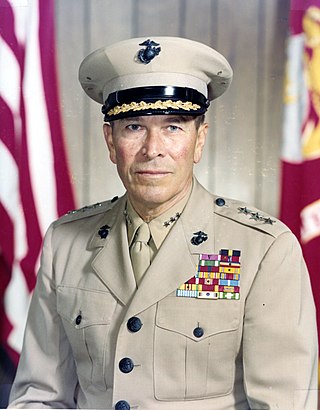
The commandant of the Marine Corps (CMC) is normally the highest-ranking officer in the United States Marine Corps. It is a four-star general position and a member of the Joint Chiefs of Staff. The CMC reports directly to the secretary of the Navy and is responsible for ensuring the organization, policy, plans, and programs for the Marine Corps as well as advising the president, the secretary of defense, the National Security Council, the Homeland Security Council, and the secretary of the Navy on matters involving the Marine Corps. Under the authority of the secretary of the Navy, the CMC designates Marine personnel and resources to the commanders of unified combatant commands. The commandant performs all other functions prescribed in Section 8043 in Title 10 of the United States Code or delegates those duties and responsibilities to other officers in his administration in his name. As with the other joint chiefs, the commandant is an administrative position and has no operational command authority over United States Marine Corps forces.

Marine Corps Base Quantico is a United States Marine Corps installation located near Triangle, Virginia, covering nearly 55,148 acres of southern Prince William County, Virginia, northern Stafford County, and southeastern Fauquier County. Used primarily for training purposes, MCB Quantico is known as the "Crossroads of the Marine Corps".

The Naval History and Heritage Command, formerly the Naval Historical Center, is an Echelon II command responsible for the preservation, analysis, and dissemination of U.S. naval history and heritage located at the historic Washington Navy Yard. The NHHC is composed of 42 facilities in 13 geographic locations including the Navy Department Library, 10 museums and 1 heritage center, USS Constitution repair facility and detachment, and historic ship ex-USS Nautilus.

The Small Wars Manual is a United States Marine Corps manual on tactics and strategies for engaging in certain types of military operations.

The United States Army Center of Military History (CMH) is a directorate within the United States Army Training and Doctrine Command. The Institute of Heraldry remains within the Office of the Administrative Assistant to the Secretary of the Army. The center is responsible for the appropriate use of history and military records throughout the United States Army. Traditionally, this mission has meant recording the official history of the army in both peace and war, while advising the army staff on historical matters. CMH is the flagship organization leading the Army Historical Program.

The National Museum of the Marine Corps is the historical museum of the United States Marine Corps. Located in Triangle, Virginia near MCB Quantico, the museum opened on November 10, 2006, and is now one of the top tourist attractions in the state, drawing over 500,000 people annually.

The Marine Corps Museum was located on the first floor of the Marine Corps Historical Society in Building 58 of the Washington Navy Yard, 9th and M Streets (southeast), Washington, D.C. It housed a wide variety of exhibits with artifacts relating to the history of the U.S. Marines. It also contained a collection of art relating to the Marines and a historical Time Tunnel. For many years, the Marine Corps Museum served as a center for preserving and showcasing the Marine Corps legacy. The museum closed on 1 July 2005, during the establishment of the National Museum of the Marine Corps.

William Gay Thrash was a United States Marine Corps three-star general and highly decorated Naval Aviator. He retired from active duty on June 30, 1972, after more than 30 years of distinguished service.

The United States Marine Corps Aviation (USMCA) is the aircraft arm of the United States Marine Corps. Aviation units within the Marine Corps are assigned to support the Marine Air-Ground Task Force, as the aviation combat element, by providing six functions: assault support, antiair warfare, close air support, electronic warfare, control of aircraft and missiles, and aerial reconnaissance. The Corps operates rotary-wing, tiltrotor, and fixed-wing aircraft mainly to provide transport and close air support to its ground forces. Other aircraft types are also used in a variety of support and special-purpose roles. All Marine Corps aviation falls under the influence of the Deputy Commandant for Aviation, whose job is to advise the Commandant of the Marine Corps in all matters relating to aviation, especially acquisition of new assets, conversions of current aircraft, maintenance, operation, and command.

John Revell "Jack" Dailey is a retired United States Marine Corps four-star general who served as Assistant Commandant of the Marine Corps (ACMC) and Chief of Staff from 1990 to 1992, Acting Associate Deputy Administrator of the National Aeronautics and Space Administration (NASA) from 1992 to 1999; and director of the National Air and Space Museum (NASM) from 2000 to 2018.
The Marine Corps Association is the professional organization for members of the United States Marine Corps and friends of the Corps. It is known for its publications Leatherneck Magazine and Marine Corps Gazette. As of 2009, MCA became part of MCA&F, the Marine Corps Association & Foundation.

Robert Edward Hogaboom was a decorated United States Marine Corps four-star general who served as chief of staff, Headquarters, U.S. Marine Corps between 1957 and 1959. Hogaboom was promoted to four-star rank upon retirement as a "tombstone general".

The United States Marine Corps (USMC), also referred to as the United States Marines, is the maritime land force service branch of the United States Armed Forces responsible for conducting expeditionary and amphibious operations through combined arms, implementing its own infantry, artillery, aerial, and special operations forces. The U.S. Marine Corps is one of the eight uniformed services of the United States.
The culture of the United States Marine Corps is widely varied but unique amongst the branches of the United States Armed Forces. Because members of the Marine Corps are drawn from across the United States, it is as varied as each individual Marine but tied together with core values and traditions passed from generation to generation of Marines. As in any military organization, the official and unofficial traditions of the Marine Corps serve to reinforce camaraderie and set the service apart from others. The Corps' embracement of its rich culture and history is cited as a reason for its high esprit de corps.

Robert Osborne Bare was a decorated officer of the United States Marine Corps, who reached the rank of lieutenant general. He is most noted for his work as chief of staff of 1st Marine Division during World War II and later as Assistant Division Commander of the same unit during Korean War. Bare later retired as commanding general of the 1st Marine Division.

Lewis Jefferson Fields was a highly decorated officer of the United States Marine Corps with the rank of lieutenant general. He served with 1st Marine Division during Vietnam War and later as commanding general of United States Marine Corps Development and Education Command.

William Robert Collins was a highly decorated officer of United States Marine Corps with the rank of major general. As lieutenant colonel, Collins distinguished himself as Tank Battalion Commander during Iwo Jima battle, but he is most noted for his service as commanding general of III Marine Expeditionary Force at the beginning of Vietnam War.

Bennet Puryear Jr. was a highly decorated officer of the United States Marine Corps with the rank of major general. During his service in World War I, he was decorated with the Navy Cross, the United States military's second-highest decoration awarded for valor in combat.

Jonas Mansfield Platt was highly decorated officer in the United States Marine Corps with the rank of major general. A veteran of three wars, Platt is most noted for his service during Vietnam War as assistant division commander, 3rd Marine Division and commander of Task Force Delta. He was also a member of so-called "Chowder Society", special Marine Corps Board, which was tasked to conduct research and prepare material relative to postwar legislation concerning the role of the Marine Corps in national defense.

Wilbur Frank Simlik was a highly decorated major general in the United States Marine Corps. A veteran of World War II, he distinguished himself as platoon leader of the 3rd Battalion, 25th Marines, during the Iwo Jima campaign and received the Silver Star for bravery. Simlik remained in the Marine Corps Reserve following the war, but was recalled to active duty during the Korean War and distinguished himself again as rifle company commander.


















